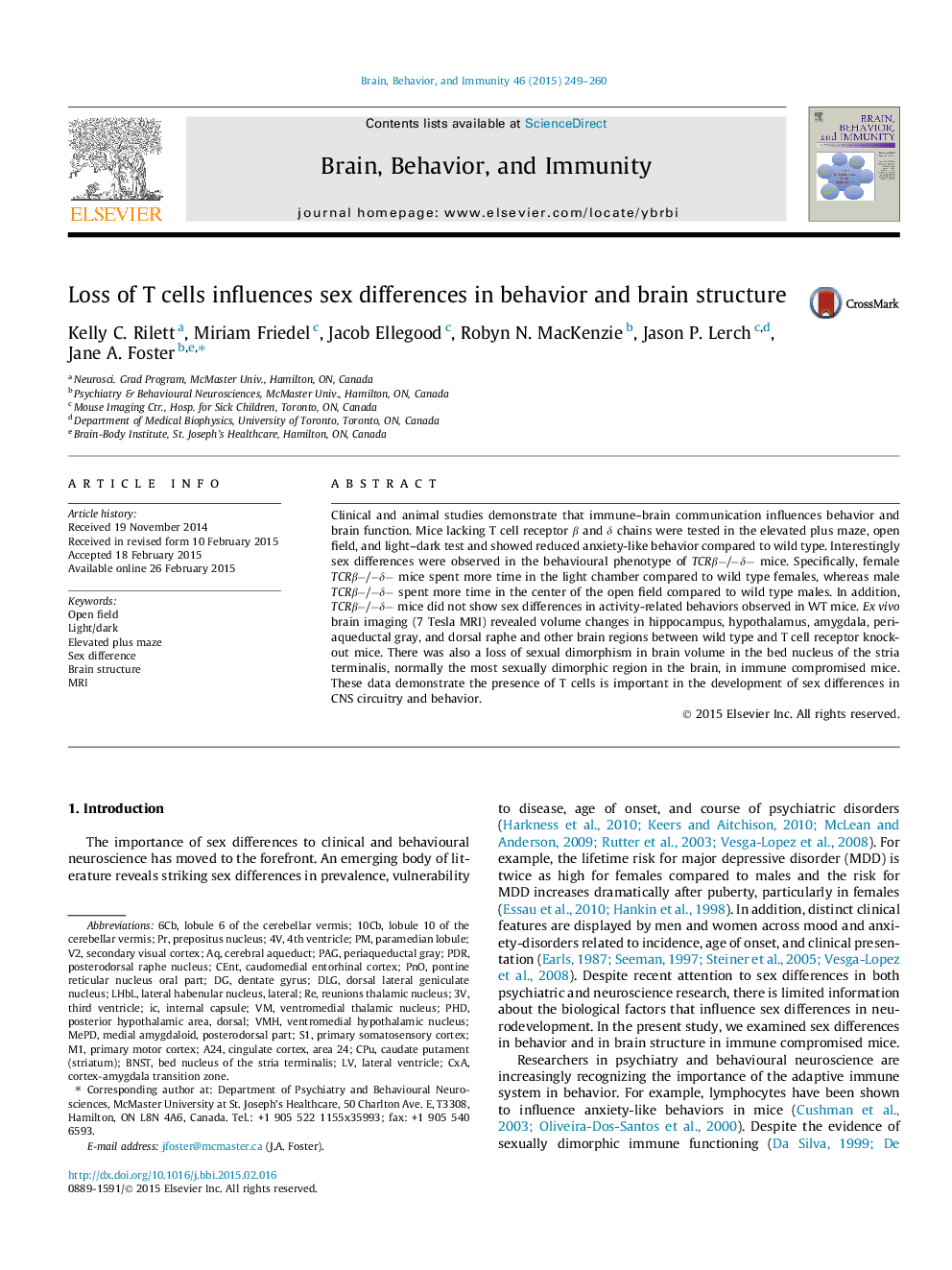| Article ID | Journal | Published Year | Pages | File Type |
|---|---|---|---|---|
| 7281270 | Brain, Behavior, and Immunity | 2015 | 12 Pages |
Abstract
Clinical and animal studies demonstrate that immune-brain communication influences behavior and brain function. Mice lacking T cell receptor β and δ chains were tested in the elevated plus maze, open field, and light-dark test and showed reduced anxiety-like behavior compared to wild type. Interestingly sex differences were observed in the behavioural phenotype of TCRβâ/âδâ mice. Specifically, female TCRβâ/âδâ mice spent more time in the light chamber compared to wild type females, whereas male TCRβâ/âδâ spent more time in the center of the open field compared to wild type males. In addition, TCRβâ/âδâ mice did not show sex differences in activity-related behaviors observed in WT mice. Ex vivo brain imaging (7 Tesla MRI) revealed volume changes in hippocampus, hypothalamus, amygdala, periaqueductal gray, and dorsal raphe and other brain regions between wild type and T cell receptor knockout mice. There was also a loss of sexual dimorphism in brain volume in the bed nucleus of the stria terminalis, normally the most sexually dimorphic region in the brain, in immune compromised mice. These data demonstrate the presence of T cells is important in the development of sex differences in CNS circuitry and behavior.
Keywords
CPULHbLparamedian lobuleCxAPnOMePDPDRPHDVMHDLGBNSTPAGMRIelevated plus mazelateral ventriclethird ventricle4th ventricleSex differencelight/darkperiaqueductal grayBrain structurecentdentate gyrusprimary somatosensory cortexprimary motor cortexsecondary visual cortexcerebral aqueductOpen fieldventromedial thalamic nucleusbed nucleus of the stria terminalisprepositus nucleusdorsal lateral geniculate nucleusVentromedial hypothalamic nucleusinternal capsule
Related Topics
Life Sciences
Immunology and Microbiology
Immunology
Authors
Kelly C. Rilett, Miriam Friedel, Jacob Ellegood, Robyn N. MacKenzie, Jason P. Lerch, Jane A. Foster,
